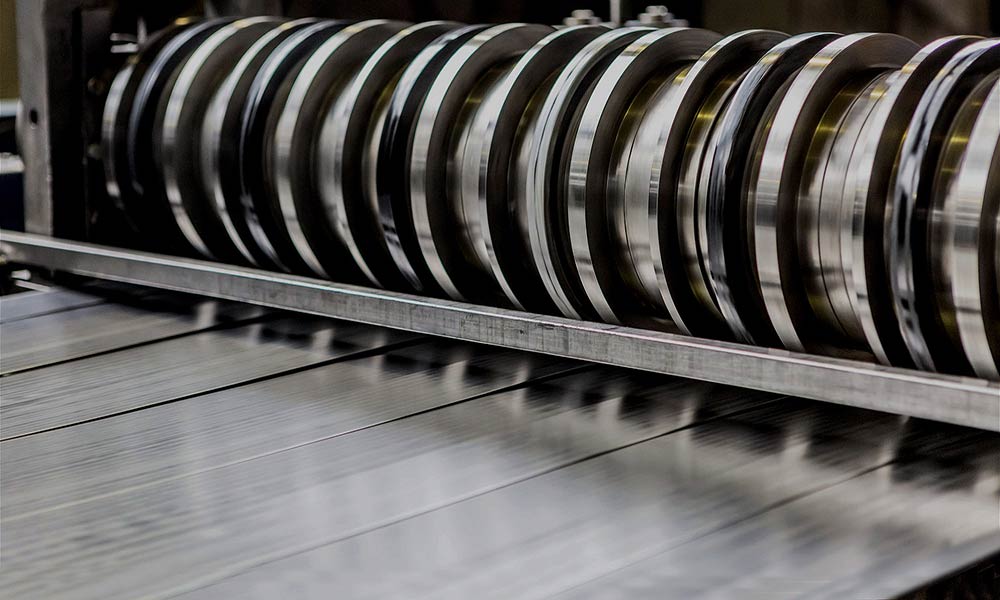
Slitting is a cutting operation that involves dividing a wide roll of material into narrower rolls, sometimes simultaneously producing several narrow rolls. There are two main types of cuts used in slitting:
- Direct cutting of wide rolls, also known as log slitting.
- Cutting at the same time as rolling, referred to as rewind slitting.
In log slitting, the material roll is typically used, and one or more cuts are made without the need to open or re-roll the material. Simultaneous cutting with the roll involves removing a strip of raw material, which then passes through a machine and blades equipped with lasers to measure the cut’s width. The material is then cut to the desired size for precise transverse cutting of the strip. This process occurs before the material is rotated on one or more shafts to form thinner rolls. If the diameter of the resulting narrower strips of material is much greater than the width of their new roll, they may be called multiples or pancakes.
In rewind slitting, a device known as a slitter rewinder is used, and the terms are often used interchangeably for similar machines. For products with narrow widths, the pancakes can become unstable, and a reel with a slot to accommodate the tape is used instead. This allows the tape to be quickly transferred to a new roll of material in a controlled manner. The spools used in this process are much wider than the width of the tape, and when winding, the spool with the tape on it oscillates across the width of the roll. This provides stability, and very long lengths (often tens of kilometers) can be transported via the pulley.
Roll Slitting Machine
